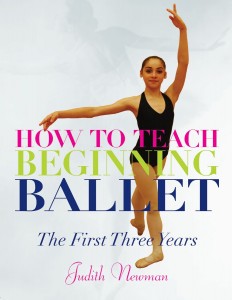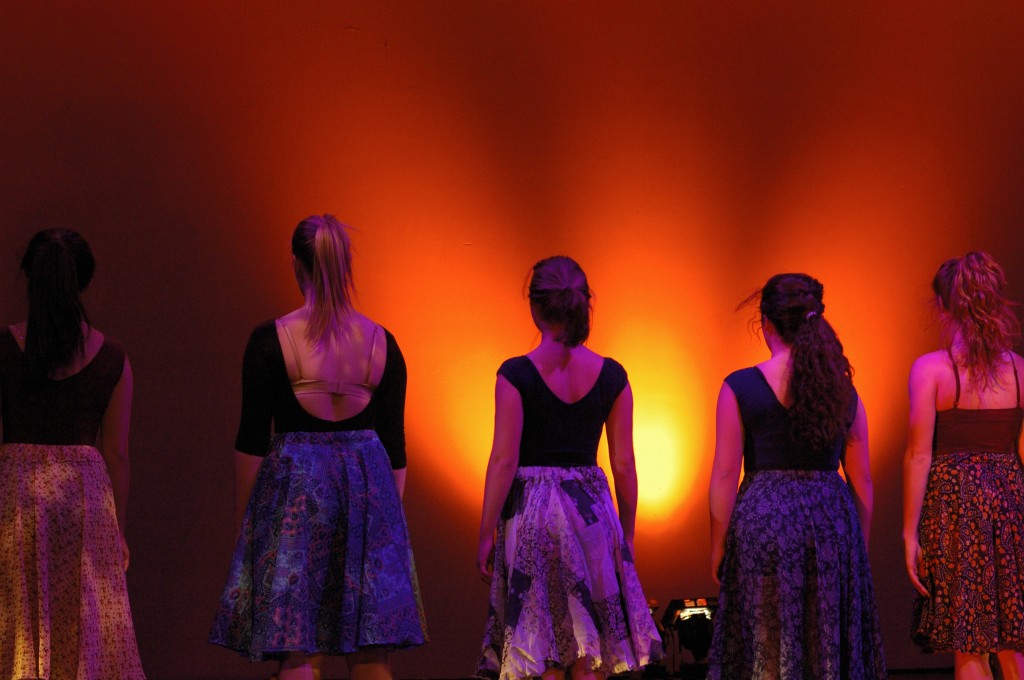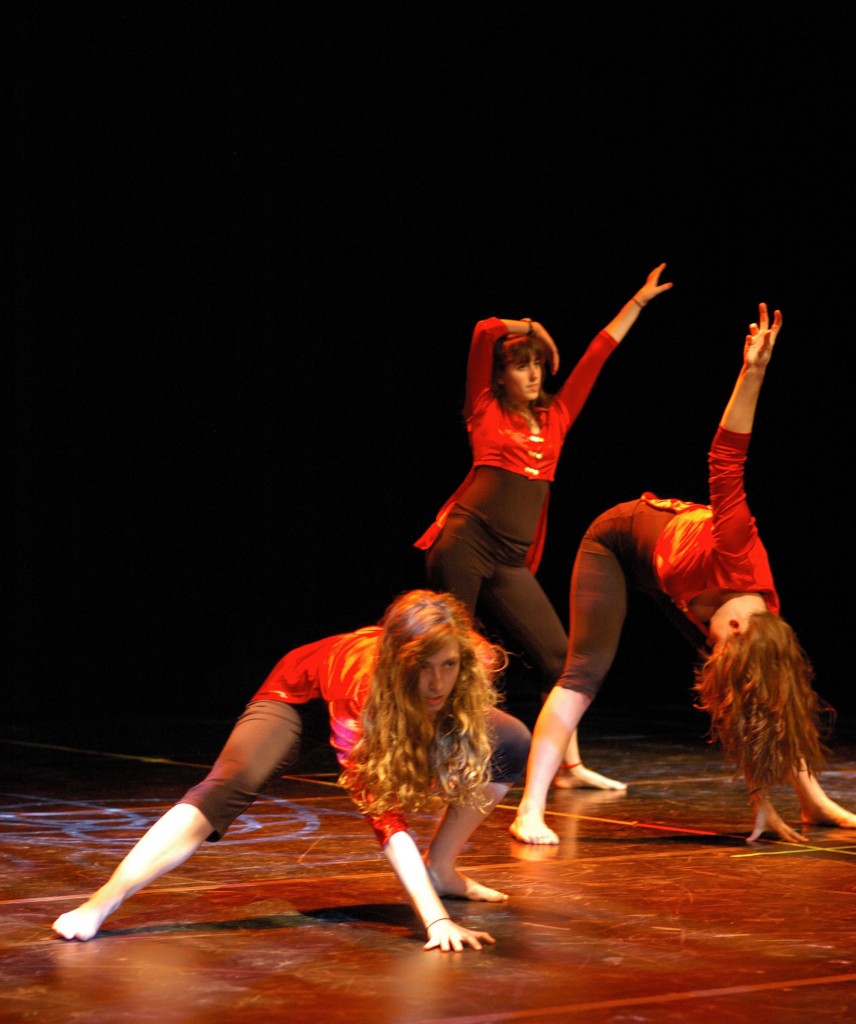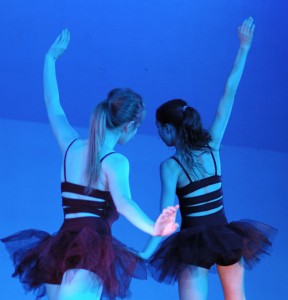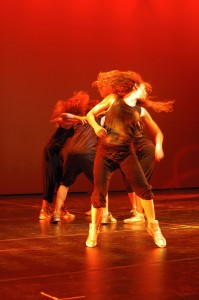
by Lucy Vurusic Riner
I loved high school. I know, most people are kind of shocked when I say it, but I did. It’s where I first remember trying to form some sort of identity. When I look at pictures of myself from freshmen year to sophomore year I go from the bad 1980’s poof hairdo prep-ster look to a shaved head, dark goth lipstick and combat boots.
Only in high school can you pull that off.
It’s also in high school that I rekindled my love for dance. I had taken class as a small child and hated the structure. My sophomore year a lovely woman named Rosemary Doolas brought dance to my all girl’s Catholic high school and here I am now. It made perfect sense to me, at age fifteen, that I was going to be a dancer.
High school dance programs in Illinois run the gamut in terms of structure. People are usually surprised to find that there are anywhere from 30 to 40 schools in the state that actually have full-blown programs. By this I mean that there is someone in the high school that is employed to teach dance classes as part of the daily curriculum. Larger schools have up to four or five faculty dedicated to teaching dance full-time while smaller schools or programs have one full-time faculty or part time positions offered throughout the day. Beyond the actual school day, hundreds of schools in Illinois offer extra curricular activities in dance. These programs also range the gamut from dance teams and orchesis companies to other specialized dance clubs (focusing on breakdance, Latin or improv).
So when I went to college and found out that I could teach my first love, DANCE to my second love, HIGH SCHOOL it was a no-brainer for me. Almost twenty years later I have taught at three different area high schools and have had the pleasure of serving as the Chair of the Illinois High School Dance Festival.
As a dance educator, I have tried to find ways to expose high school students to dance in a number of different ways. As with any other subject in high school, teachers are always hoping to increase the number of students they can get involved in their programs. Below, I have compiled some of my thoughts on teaching dance, particularly modern dance, within the high school curriculum.
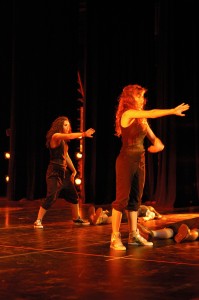
Know your audience
These are adolescents. They are completely self involved and utterly dramatic. You also have a wide range of levels and experiences. There are students that take class at their studios and students that you are trying to expose to dance for the first time. How do you develop ways to keep both of these populations interested? Your advanced ballet student that competes at her studio is a very different person than the beginning dance student who is mortified to put on a leotard and tights. You have to be sensitive to your audience and know who you’re playing to. Otherwise you have the potential of losing some really amazing opportunities with new movers that you can mold into your program as the years progress.
Build relationships with your students
These are high school students. They are social beings. The more you get to know your students and invest in who they are as people, the more they will invest in trusting you. And if they trust you, you can expose them to far more advanced ways of looking at dance.
I share at least one personal dance experience with my classes each week. It helps them to know me not only as their teacher, but also as a student of dance. It also doesn’t hurt to let them know you’re a person outside of dance class as well. I share stories and pictures of my own family with my students and it allows them to see you through different lens.
Give a little to get a little
Being an artist is a vulnerable thing. And let’s be honest, most kids don’t come near liking high school as much as I did. For many students it’s a means to the end; they imagine how they’ll get through it.
I believe in fun. I think it’s pretty basic: I love dancing because it is fun. And in it’s “fun-ness” I am able to express myself and nurture my creativity. Is it also challenging? Yes. Does it also take a lot of self-discipline? Yes. But all the hard work is worth it because I have walked out of the classroom feeling satisfied. And for me, satisfaction is fun.
(As a side bar, we as dance teachers sometimes think that having fun doesn’t mean that we are working hard or learning valuable lessons. This is not true. You are allowed to have fun in any level class you teach, in whatever content you choose to teach that day. You can be serious and still have fun. And if you allow your students to see your love and investment in dance they will relate to you more. You might become the bright spot in a potentially stressful day and they’ll be happy to see you.)
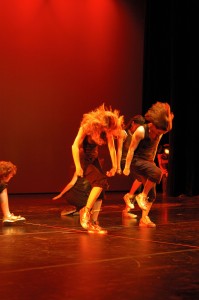
Have a well-rounded curriculum
This next point is a philosophical one and it’s just my opinion but here goes…
You have to teach more than just what you love. I love modern dance but I’m not going to assume that all my students do too. In fact, in most cases, I’m trying to expose them to modern dance for the first time. My practice initially is to include modern dance in an introductory course and than offer more specific classes after they have had a taste of it.
As students begin to realize that modern dance is a form of self-expression, they become more invested in studying it more deeply. But within that curriculum I want to offer what they “know” as well. I love hip hop and jazz. That’s what I loved as a child. I love teaching hip hop and jazz. And honestly, there is still a lot I can teach my high school students about dance forms that they “think” they already know. I value those dance forms as much as I value modern dance; I just happen to enjoy making and performing modern dance more as an adult. But I have to remember to put myself in my high school shoes. Had I not already been in a major identity crisis my sophomore year in high school, I may not have walked into Rosemary Doolas’ modern class. And the reason I loved it is because I wanted to be different; and that stuff was DIFFERENT.
But most high school kids are not trying to be different. Most high school kids are just trying to fit in. They want to feel safe in their explorations of who they are and I have found the best way to do that is give them options. This is the time in their life where they should be exposed to a variety of different dance forms and choose their own path in what they find interest in. I am there to be the guide.
Don’t take yourself so seriously
Clearly this could also be a life lesson right?
Do you have any tips for teaching teens? If so, leave one in the comments section!
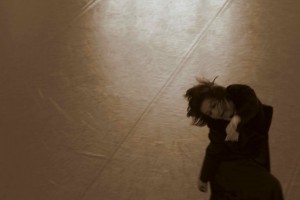
Contributor Lucy Vurusic-Riner is a native Chicagoan who has been supporting and contributing to the dance community for over twenty years. She received her Bachelor of Science Degree in Dance Performance and Dance Education from Illinois State University. Lucy has been a member of Molly Shanahan/Mad Shak, RTG Dance Company and Matthew Hollis’ “The Power of Cheer.” She has also had the opportunity to be part of the community casts of White Oak Dance Project and David Dorfman Dance.
Lucy has taught modern, hip hop, and jazz at numerous studios and high schools in the Chicagoland area. She was the Director of Dance at Oak Park and River Forest High School from 1999 to 2012. In 2005, Lucy completed her Masters Degree in Education from National Louis University and also received the Midwest Dance Teacher of the Year award and was the youngest of four finalists in the running for the National Dance Teacher of the Year award. Lucy and artistic partner, Michael Estanich, formed RE|Dance Group in 2010. RE|Dance Group investigates humanity in movement through long distance collaboration.
In 2012, Lucy joined the dance faculty at New Trier High School in Winnetka, IL. When she is not immersed in dance, she is at home with her two great kids, Margie and Luka, and her very supportive husband, Jim.





